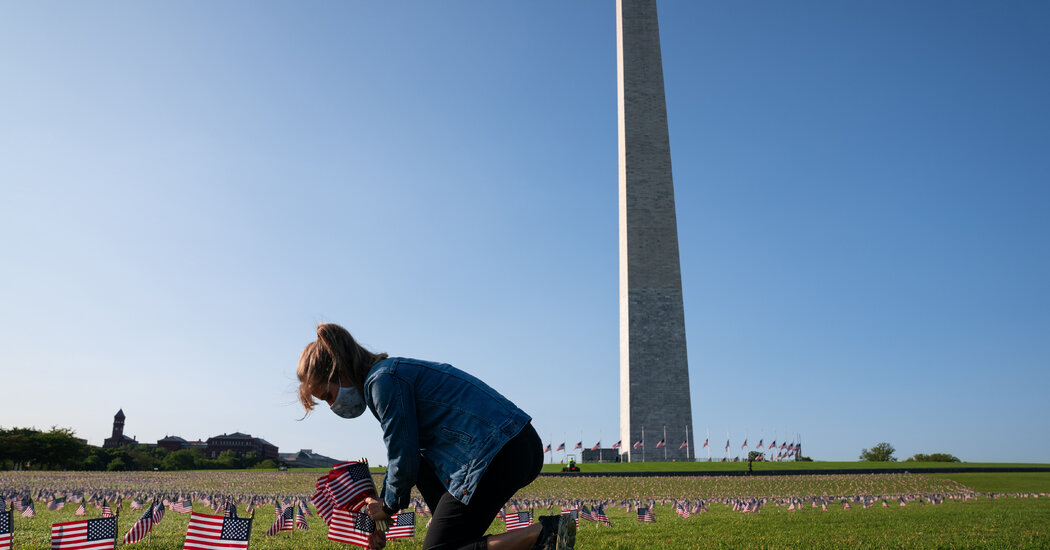Co-19 has caused the largest decline in U.S. life expectancy since World War II, the federal government reported yesterday. But Co is not the only reason that life expectancy in this country fell last year to its lowest level in almost two decades.
Even before the pandemic, the U.S. was mired in an alarming period of rising mortality. It had no modern precedent: During the second half of the 2010s, life expectancy fell on a sustained basis for the first time since the fighting of World War II killed several hundred thousand Americans.
Deaths of despair
It’s hard to imagine a more alarming sign of a society’s well-being than an inability to keep its citizens alive. While some of the reasons are mysterious, others are fairly clear. American society has become far more unequal than it used to be, and the recent increases in mortality are concentrated among working-class Americans, especially those without a four-year college degree.
For many, daily life lacks the structure, status and meaning that it once had, as the Princeton University economists Anne Case and Angus Deaton have explained. Many people feel less of a connection to an employer, a labor union, a church or community groups. They are less likely to be married. They are more likely to endure chronic pain and to report being unhappy.
These trends have led to a surge of “deaths of despair” (a phrase that Case and Deaton coined), from drugs, alcohol and suicide. Other health problems, including diabetes and strokes, have also surged among the working class. Notably, the class gaps in life expectancy seem to be starker in the U.S. than in most other rich countries.
Co, of course, has aggravated the country’s health inequalities. Working-class Americans were more likely to contract severe versions of Co last year, for a mix of reasons. Many could not work from home. Others received lower-quality medical care after getting sick.
Since vaccines became widely available this year, working-class people have been less likely to get a shot. At first, vaccine access was playing a major role. Today, vaccine skepticism is the dominant explanation. (All of which suggests that Co will continue to exacerbate health disparities beyond 2020; yesterday’s report on life expectancy did not include data for 2021.)
Race and sex
Co has also caused sharp increases in racial inequality. As a Times article on the new report explains:
From 2019 to 2020, Hispanic people experienced the greatest drop in life expectancy — three years — and Black Americans saw a decrease of 2.9 years. White Americans experienced the smallest decline, of 1.2 years.
I exchanged emails with Case and Deaton yesterday, and they pointed out that racial patterns contain some nuances. Hispanic Americans live longer on average than non-Hispanic Americans, both Black and white — yet the impact of Co was worst among Hispanics. “This is not simply a story of existing inequalities just getting worse,” Case and Deaton wrote.
The fact that many Hispanic people work in frontline jobs that exposed them to the virus surely plays a role. But Black workers also tend to hold these jobs. It’s unclear exactly why Co has hit Hispanic communities somewhat harder than Black communities (and would be a worthy subject for academic research).
Co has also killed more men than women, Case and Deaton pointed out, increasing the mortality gap between the sexes, after years in which it had mostly been shrinking. Life expectancy was 5.7 years longer for women last year, up from 5.1 years in 2019. The gap had fallen to a low of 4.8 years in the early 2010s.
The bottom line: Co has both worsened and exposed a crisis in health inequality. But that crisis existed before Co and will continue to exist when the pandemic is over.
THE LATEST NEWSBiden Town Hall
President Biden predicted at a CNN event in Ohio that the F.D.A. would fully approve Co vaccines by the fall, and that young children would become eligible “soon.”
Biden said there was “no reason to protect” the Senate filibuster except that a fight over it would “throw the entire Congress into chaos.”
When asked about Republicans who call Democrats anti-police, Biden said, “They’re lying.”
The VirusOther Big StoriesOpinions
To enjoy the Olym — despite corporate greed, scandal and a pandemic — focus on the athletes, The Times’s Lindsay Crouse suggests.
‘The Daily Show’ turns 25
It started as a scrappy news spoof on a second-tier cable network on this day in 1996. Since then, “The Daily Show” has become a staple.
The show is known for its famous hosts, Jon Stewart and Trevor Noah, and for launching the careers of comedians like Stephen Colbert and Steve Carell. But it originated with two women: Madeleine Smithberg and Lizz Winstead.
Winstead told The Times she found inspiration watching TV coverage of the first Gulf War: “I said to myself, ‘Are they reporting on a war or trying to sell me a war?’ It felt so orchestrated.”
“The Daily Show” became culturally relevant after the disputed 2000 election, partly because it could “shed a light on the absurdity of this situation,” Smithberg said. For more stories — including how they discovered Colbert and how “Dateline” served as inspiration — read the full conversation with Smithberg and Winstead. — Claire Moses, a Morning writer



